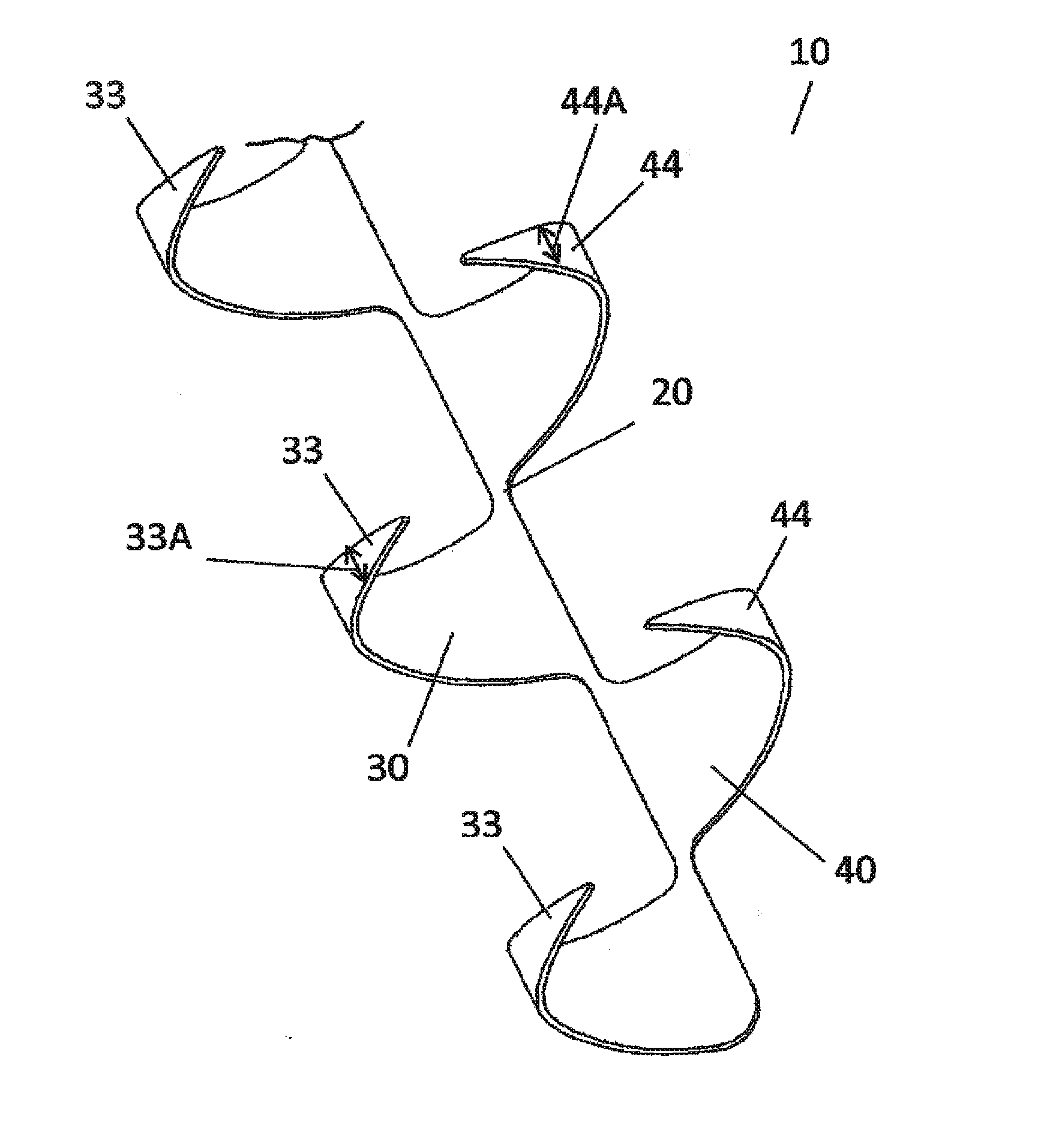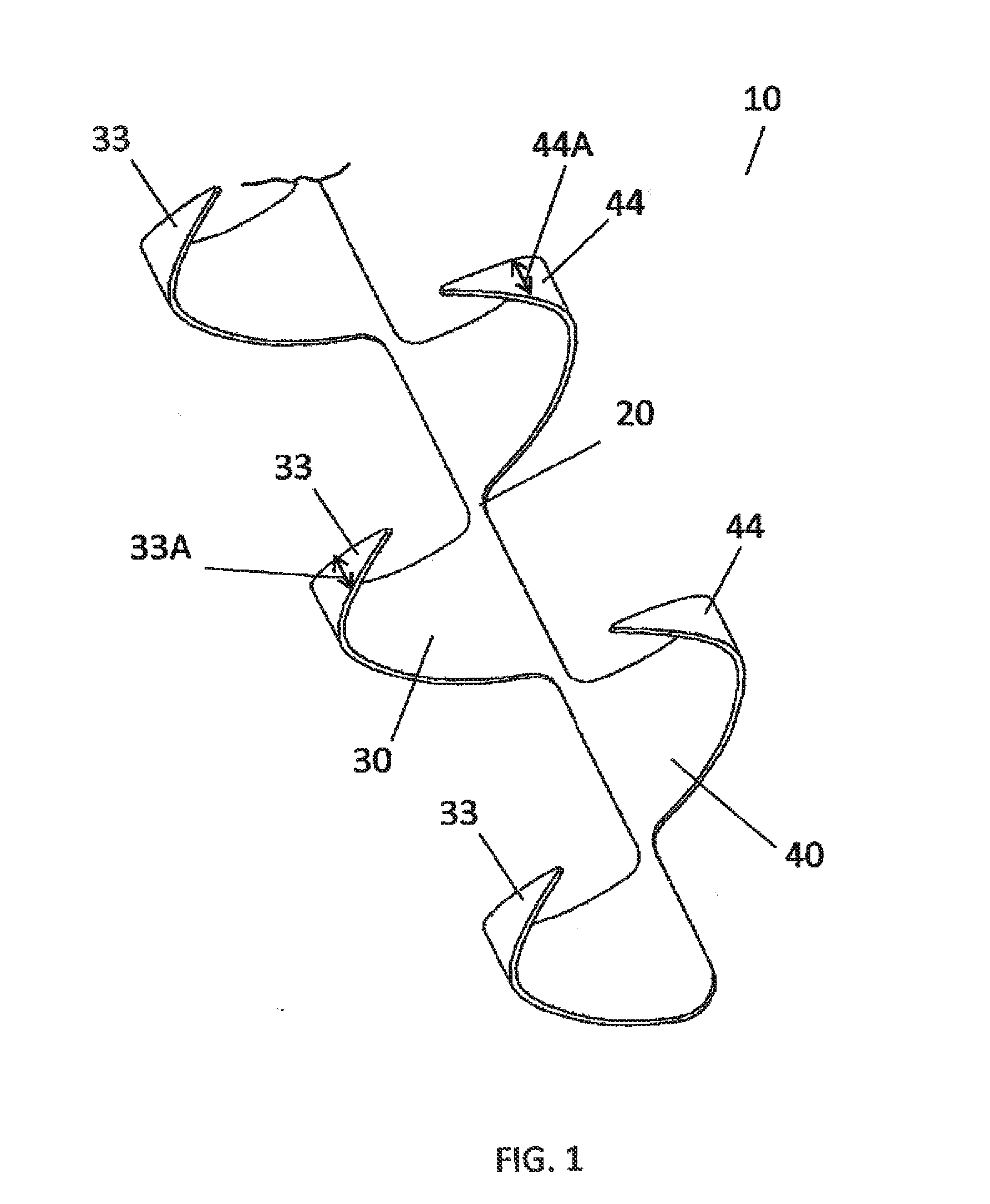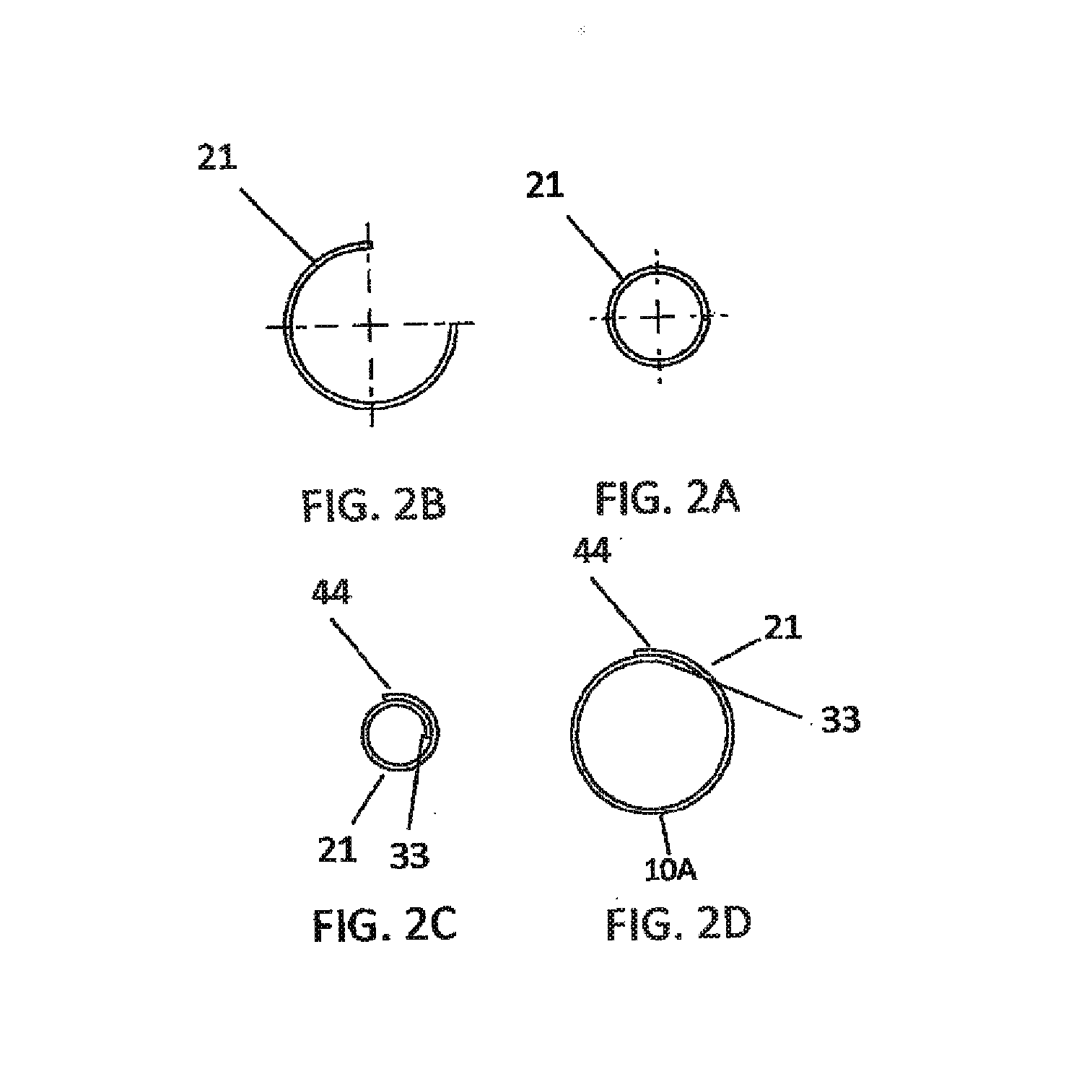Anti-restenosis coronary stent
a technology of anti-restenosis and coronary artery, which is applied in the field of anti-restenosis coronary artery stent, can solve the problems of inability to correlate, damage to the artery wall stratum, and penetration of wires against the wall of the artery,
- Summary
- Abstract
- Description
- Claims
- Application Information
AI Technical Summary
Benefits of technology
Problems solved by technology
Method used
Image
Examples
Embodiment Construction
[0050]The following detailed description is of the best currently contemplated modes of carrying out the invention. The description is not to be taken in a limiting sense, but is made merely for the purpose of illustrating the general principles of the invention, since the scope of the invention is best defined by the appended claims. In particular, although reference may be made to coronary stents and to angioplasty, such references are merely by way of non-limiting exemplary applications, but should not be considered to limit the present invention to such applications.
[0051]The present invention generally provides a stent for an artery that reduces risks of restenosis. The stent is capable of opening peripherally within an artery from a closed position to an open position such that in the open position a periphery of the stent has a longitudinal opening spanning a length of the stent, the longitudinal opening spanning between approximately 30 and 160 degrees. This allows blood to ...
PUM
 Login to View More
Login to View More Abstract
Description
Claims
Application Information
 Login to View More
Login to View More - R&D
- Intellectual Property
- Life Sciences
- Materials
- Tech Scout
- Unparalleled Data Quality
- Higher Quality Content
- 60% Fewer Hallucinations
Browse by: Latest US Patents, China's latest patents, Technical Efficacy Thesaurus, Application Domain, Technology Topic, Popular Technical Reports.
© 2025 PatSnap. All rights reserved.Legal|Privacy policy|Modern Slavery Act Transparency Statement|Sitemap|About US| Contact US: help@patsnap.com



